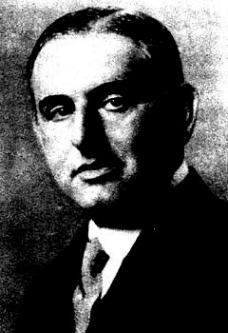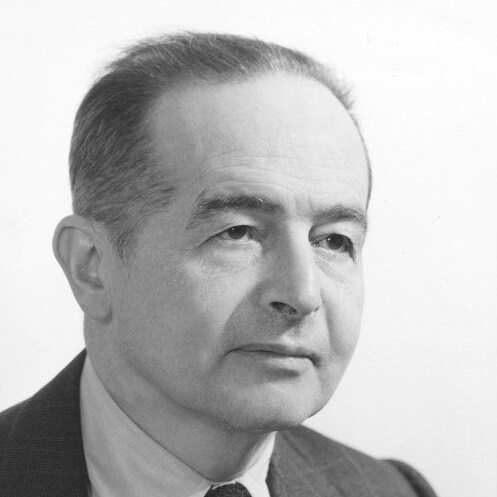Arthur Erich Haas
Arthur Erich Haas ( born April 30, 1884 in Brno, † February 20, 1941 in Chicago ) was an Austrian physicist.
Life
Arthur Erich Haas grew up as the eldest son of the lawyer Gustav Haas in Brno. There he attended the German School, where he graduated in 1902.
From 1902 he studied mathematics and physics at the Universities of Vienna and Göttingen. In 1906 he received his doctorate in Vienna Dr. phil. with a thesis on " Ancient theories of light ." In the following years he occupied himself mainly with the history of science and handed 1909 habilitation thesis on "The evolution of the set of the conservation of force ", which was rejected.
Then he turned to disappointment physical studies and published several books in the field of atomic physics. He succeeded in 1910, for the first time to establish a connection between the quantum hypothesis of Max Planck and atomic physics.
In 1912, he was finally able to habilitation with his work on the " equilibrium positions of electrons groups ". In the same year he became professor of History of Physics at the Faculty of Philosophy of the University of Leipzig, where he also held courses in theoretical physics, and in 1919 the textbook "Introduction to theoretical physics " published. From 1923 to 1935 he taught as a professor at the University of Vienna. In 1924 he was a visiting professor at University College London, in 1927 and 1931, he held, at the invitation of the Institute of International Education guest lectures at numerous universities in the United States.
In 1924 he married Emma Beatrice Huber, the couple had two sons.
In 1935, Haas and his family emigrated to the USA and was initially a visiting professor at Bowdoin College in Brunswick, Maine. A year later he became professor of physics at the University of Notre Dame in South Bend, Indiana, where he remained until his death in 1941.
Services
In 1910, Haas developed a model of the atom containing the Planck constant for the first time. On the basis of his model of the hydrogen atom, he led forth an expression for the Rydberg constant only of basic constants and thus took in a similar form Niels Bohr's formula for three years in advance. The difference in the formula was because the Haas Thomson, Bohr, however, used the Rutherford model of the atom.
Haas developed an early interest in cosmological questions, which was not only physical, but also philosophical and theological nature. In works from the years 1907 and 1911, he concluded that an eternally existing universe would be inconsistent with the laws of physics, which he established not only with the second law of thermodynamics, but also with the limited life time of radioactive elements. It was the first time that radioactivity was considered in a cosmological context. He supported the Big Bang theory and represented as Georges Lemaître the view that the universe must have a finite size.
In addition to his "Introduction to theoretical physics ", the first modern textbook on theoretical physics, Haas has written numerous other textbooks that were widely spread and have been translated into ten languages.
1920 Haas developed a theory for the isotope effect in rotational spectra, independent of Francis Wheeler Loomis and Adolf Kratzer, lined up the same theory.
In 1938 he organized at the University of Notre Dame under the title " The Physics of the Universe and the Nature of Primordial Particles" one of the first conferences on physical cosmology, at the Harlow Shapley, among others, Arthur Holly Compton, Georges Lemaître and Carl David Anderson took part.
Writings
- About the electrodynamic importance of Planck's radiation law and a new determination of the electrical elementary quantum and the dimension of the hydrogen atom. In: Proceedings of the Academy of Sciences in Vienna, Dept. IIa, Vol 119, pp. 119-144 (1910 )
- Introduction to theoretical physics. 2 vols (1919)
- Nature Picture of the New Physics. (1920 )
- Atomic theory. (1924 )
- Matter waves and quantum mechanics. (1928)
- The foundations of quantum chemistry. (1929 )
- Umwaldlungen of chemical elements. (1935 )










